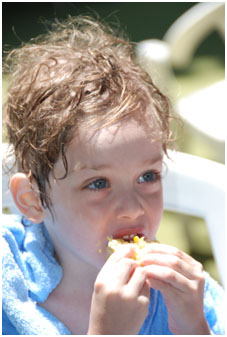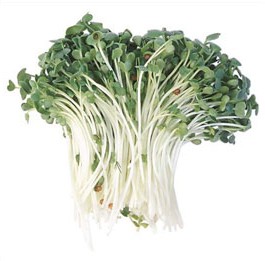
Even more than advertising, the best way to get kids to eat vegetables is to love eating vegetables yourself and to buy lots of them for your home. If this is what kids have on hand, this is what they will eat. Obviously, this is not as easy to do as we might think. Otherwise, everyone would do it and every kid in the world would eat vegetables at every meal.
The A-Z Vegetable Challenge
One of the tricks I offer to my clients to get kids to eat vegetables and overcome eating problems is the A-Z Vegetable Challenge. Starting with the letter A, the family chooses a vegetable beginning with that letter to focus on for the week, to learn about, research, cook with and eat.
Kids can learn a lot from this activity. For example: in the first week, kids need to find vegetables starting with the letter A: Asparagus, Avocado, Alfalfa, Artichoke. They learn what these vegetables look like, what color they are, what varieties are available, how you can buy them (fresh, canned, frozen), what they are good for (vitamins, minerals, fiber), their nutritional value (this works better with older kids), how best to store them, and even how to grow them at home (I grow alfalfa in the kitchen and several vegetables in the garden). Then, they can search for recipes, decide on quantities, go shopping for the vegetables, cook them and then eat the final product.
It helps if they summarize their experience with each vegetable and each dish. For example, “I liked eating the Avocado with honey, but I didn’t like it with mayonnaise”. This gives you an opportunity to see what vegetables and dishes they like and later incorporate them into your cooking. It also gives you an opportunity to see what they do not like and discuss with them ways to prepare them differently.
It is a good idea to keep a copy of the recipes you all liked. Store them in a folder and put it where the kids can easily reach. Letting them practice with these recipes will help them gain confidence in their cooking skills.
If you have personal stories related to specific vegetables, use them. Sharing stories with your children is a good way to make the experience more meaningful. Telling stories in general is an excellent way to get kids to eat vegetables, because they are too fascinated by the story to pay attention to the food…
For younger children, using vegetables to make artwork (gluing peas, or painting with beetroot, cutting a Brussels sprout in half and using it as a stamp) can increase the association for them between vegetables and fun.
Week 2 is for the letter B. Encourage your kids to come up with vegetables starting with the letter B: Beetroot, Broccoli, Brussels sprout, Basil (if you want to include herbs), Bell pepper, Bok Choi.
A friend of mine said they found a cake made out of beetroot. They found out that adding beetroot juice to the icing made it a strong red color and the kids were very excited about this.
Through learning about the vegetables, researching, shopping, cooking, baking and even doing some art with vegetables, kids can learn things they would not know any other way.
It is OK if they end up not liking some of the dishes they try, or the artwork they created. Eventually, they will find things they like just from being exposed to such a wide variety of vegetables. You can’t find something you love to eat if you have never tried it, right? This experience will give them a much wider range of vegetable-eating options.
By the time you get to Z (Zucchini), your kids will be eating more vegetables than they ever imagined. By the way, this works even better with fruit :)
Happy vegetable eating!
Ronit
This post is part of the series Handy Family Tips:
- Make Your Bed to Make Your Day
- Handy Family Tips: Dishwasher
- Handy Family Tips: Pre-Marinating
- Handy Family Tips: Kitchen Scissors
- Handy Family Tips: First use date
- Handy Family Tips: Kids’ Artwork
- Handy Family Tips: Keys
- Handy Family Tips: Smelly bins
- Handy Family Tips: Treasure box
- Handy Family Tips: Glass jars
- Handy Family Tips: On time is late
- Handy Family Tip: Early is on time
- Handy Family Tips: Electric toothbrush
- Handy Family Tips: Make a Note
- Handy Family Tips: Laundry day
- Handy Family Tips: How to Peel Avocado
- Handy Family Tips: Bathroom Art
- Handy Family Tips: Easy Healthy Spread
- Handy Family Tips: Wake Up With a Smile
- Handy Family Tips: Color Coded Keys
- Handy Family Tips: Road Trip Games
- Handy Family Tips: How to Get Kids to Eat Vegetables
- Handy Family Tips: What to Do When There is No Shaving Cream?
- How to Control Your Kids’ Mobile Phone Use at Night











